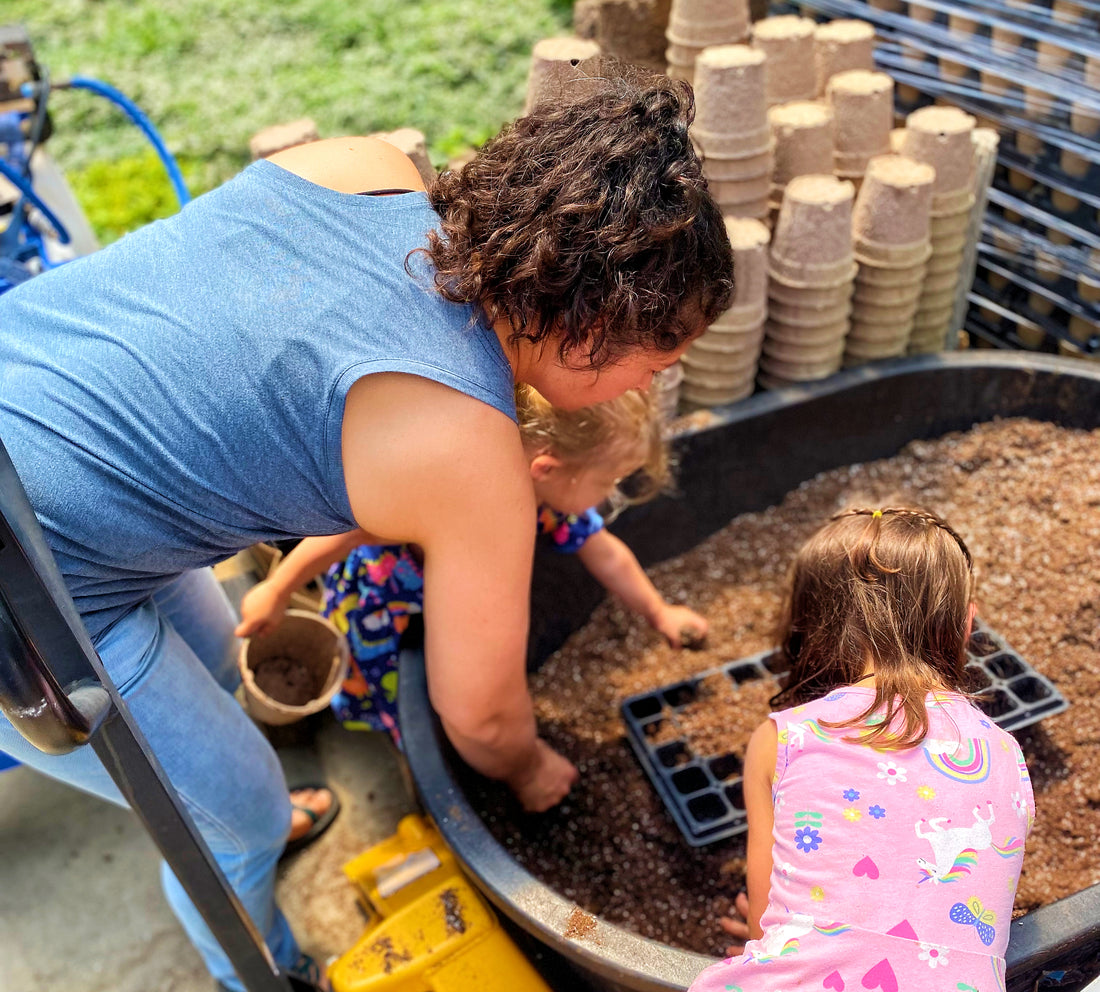Generational Plants
As we celebrate moms this month, we can’t help but reflect on our moms’ and grandmas’ favorite plants. And how they helped shape our own plant passions. Jared’s mom loves moss rose portulaca, hens and chicks, climbing honeysuckle, clematis and bleeding heart. No wonder, he’s such a fan of clematis, hardy succulents and portulaca, today. In our greenhouses, he grows hundreds of these proven garden stalwarts – both the classics and new hybrids -- to share customers.
For Liz, she adores her mom’s towering delphiniums, her bloom-loaded hydrangeas and her colorful collection of coneflowers. She proudly carries on her mom’s spring planting tradition with their own daughters. This spring, Liz and the girls are planting a big vegetable garden with plenty of tomatoes. The girls will help plant lots of zinnia seeds too, so they’ll have plenty for bouquets this summer.
Read on to continue this nostalgic journey as we look back at generational plants and gardening trends through the decades, beginning with the 1940s.

1940-50s
The decade opened with a call to plant Victory Gardens of fruits and vegetables to counter produce shortages during WWII. As huge numbers of men left to serve overseas, an influx of women entered the workforce and brought houseplants like African violets to work to accent their desks. Post war, the US experienced a housing boom thanks to support from the the GI bill. The American backyard emerged as a place for gardening and leisure; and the front yard become a source of pride or “keeping up with the Jones.” This generation, many that endured the Great Depression, valued long-lasting perennials and shrubs like peonies, roses and lilacs along with multiplying plants like lily-of-the valley, daffodils, daylilies and rose of sharon. They also appreciated annuals like marigolds and zinnias in which they could easily save seeds and replant next year. More premiums plants like geraniums, begonias, fushias and petunias were often reserved for special pots.
1960s-70s
Carrying over from the 1950s, the Baby Boom fueled the rise of suburbs and increasing interest in the perfect lawn. Houseplants and tropicals took off as homeowners brought “exotic” plants into their homes and backyards. This was the era of orchids, philodendron, pothos vines and snake plants along with Tiki huts and Hawaiian cocktails complete with paper straws. The decade became known for its iconic shag carpet, Lucite furniture and mod colors. The 1970s ushered in a season of personal, easy-going style with bold colors and DIY projects. Remember the terrariums and hand-made macrame hanging baskets filled with spider plants or ferns? Raised bed vegetable gardens also became popular as an option for vegetable gardening on smaller suburban lots.
1980s-90s
In the era of “big is better,” houseplants like parlor palms filled sunrooms and over-the-top spa-like bathrooms with whirlpool tubs. Sadly, silk plants became trendy for a couple decades filling bookshelves, vases and cabinet tops. At this time, international design styles also influenced American homes and gardens. Gardeners carried this worldly flair into the landscape with Japanese tea gardens, English cottage gardens and French potager kitchen gardens. Fashionable plants were bamboo, Japanese maples, bonsai, English roses, topiaries, Dutch bulbs and French lavender. Later in the 90s, a more bohemian American Southwest style rallied with collections of cacti and succulents.
2000s and Beyond
The Tuscan style dominated the start of this new century followed by the modern farmhouse in 2010. Martha Stewart and HGTV spurred a new era of DIY gardeners in these years. Authors like Doug Tallamy prompted an environmental movement with naturalistic gardens, native plants and pollinator habitats. And more recently, with the pandemic, the 1970s houseplant craze returned along with a boom in new gardeners. And we’re forever grateful!
What plants will you pass on to the next generation?


